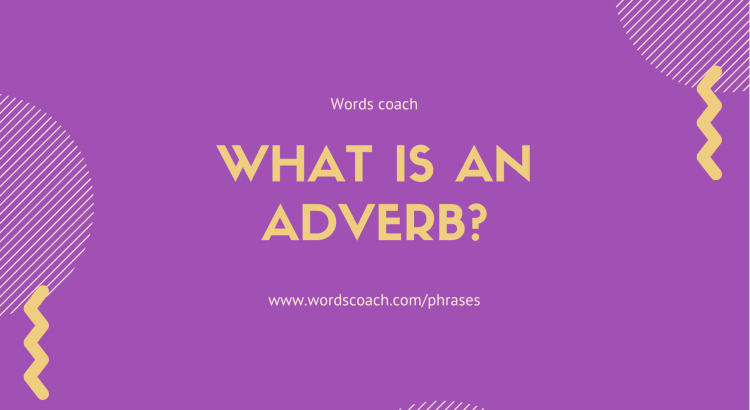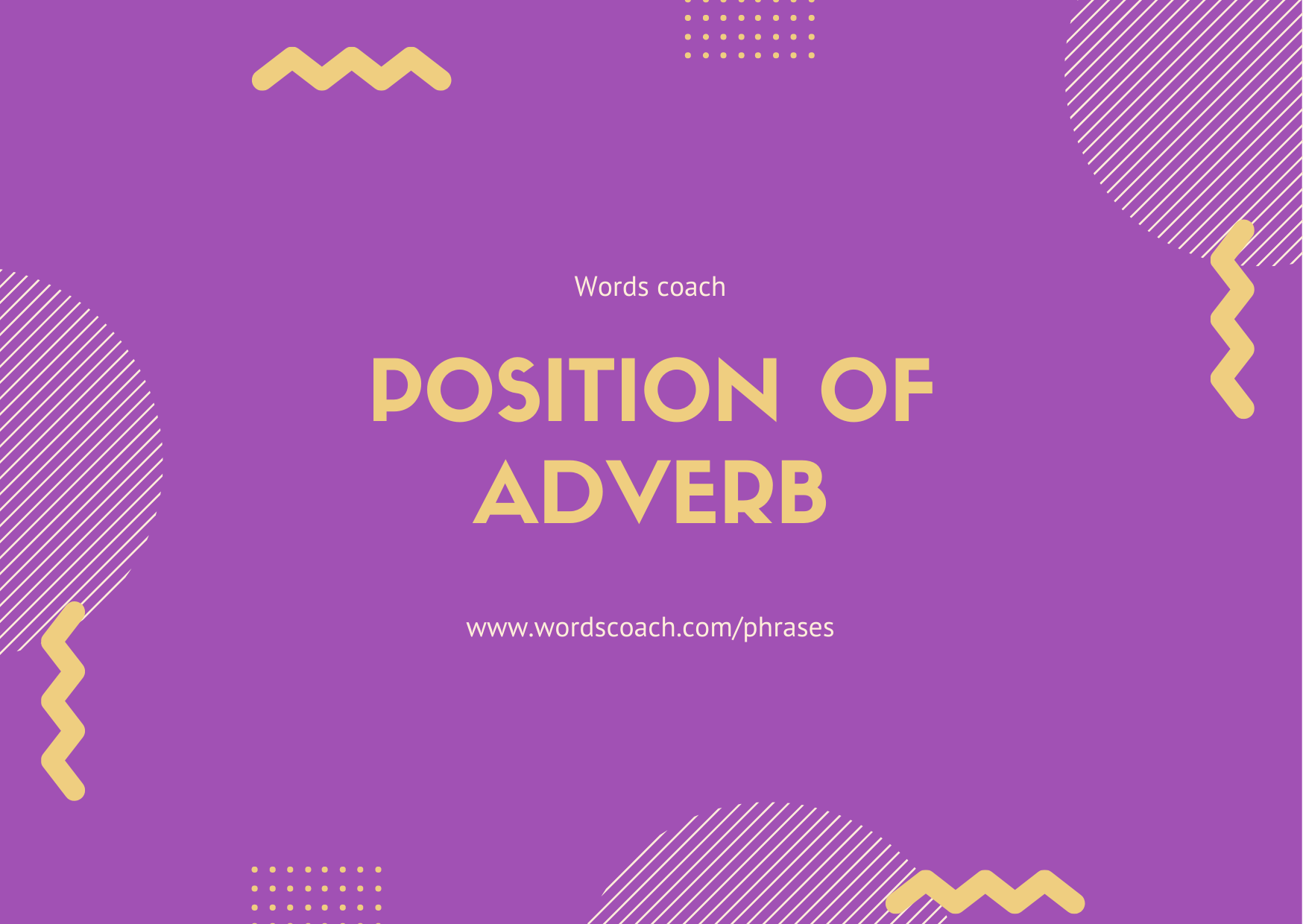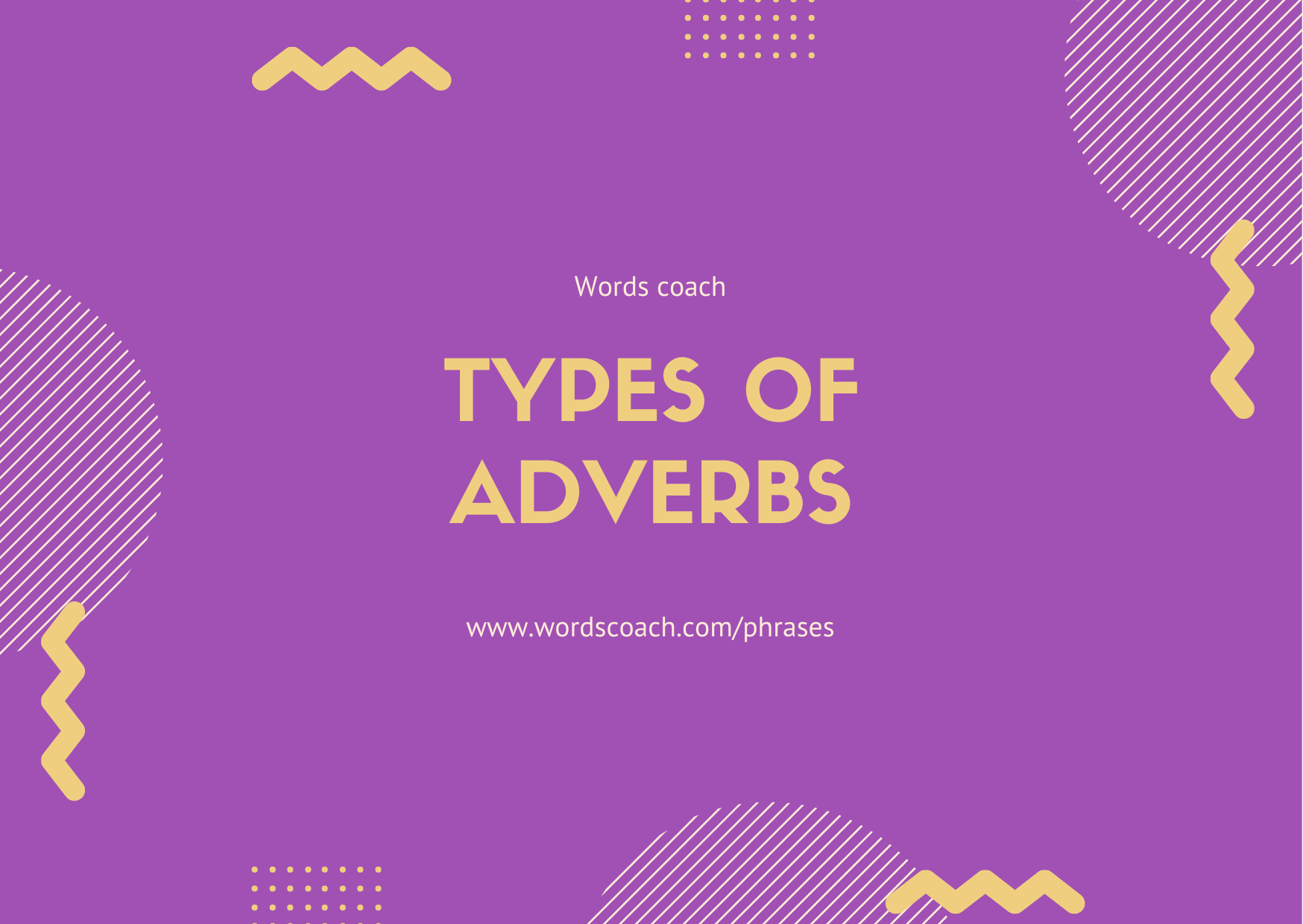What Is an Adverb?
An adverb describes a verb, an adjective or another adverb. It tells us How, Where, When, How much and with what frequency.
An adverb is a word that describes a verb, an adjective, another adverb, or even a whole sentence. Adverbs often end in -ly, but some look exactly the same as their adjective counterparts.
Example:
- My sister swims badly.
- The soccer match ended quickly.
- Fortunately, Lucy recorded Tom’s win.
The adverb can be used to modify various different types of words.
Adverbs with Verbs
Adverbs often modify verbs.
An adverb can be used to talk about how an action is happening.
Example:
- Phillip sings loudly in the shower.
- My cat waits impatiently for his food.
- He will seriously think about this idea.
The adverbs in each of the sentences above answer the question ‘how does something happen?’ or ‘In what manner does it happen?’
Adverbs can answer other types of questions about how an action was performed. They can also tell you when and where.
However, there is one type of verb that doesn’t mix well with adverbs. Linking verbs, such as feel, smell, sound, seem, and appear, typically need adjectives, not adverbs.
A very common example of this type of mixup is
Incorrect:- I feel badly about what happened.
Because “feel” is a verb, it seems to call for an adverb rather than an adjective. But “feel” isn’t just any verb; it’s a linking verb. An adverb would describe how you perform the action of feeling – an adjective describes what you feel. “I feel badly” means that you are bad at feeling things. If you’re trying to read Braille through thick leather gloves, then it might make sense for you to say “I feel badly.” But if you’re trying to say that you are experiencing negative emotions, “I feel bad” is the phrase you want.
Adverbs with Adjectives
An Adverbs also has the ability to modify adjectives and other adverbs. Often, the purpose of the adverb is to add a degree of intensity to the adjective.
Consider the phrase “She is short.” The adjective here is short, but with the use of an adverb, we can describe how short she is. Look at the sentence once it has been modified:
- She is very short.
Here are some more examples of how an adverb can modify an adjective.
Example:
- This book is more interesting than the last one.
- The weather report is almost always right.
- The beach was unexpectedly busy.
- My teacher is always well dressed.
The adverb almost always modifies the adverb always, and they’re both modifying right.
Example:
- My dog is incredibly happy to have his dinner.
- We will be slightly late to the meeting.
Adverbs and other adverbs
You can use an adverb to describe another adverb. In fact, if you wanted to, you could use several.
Example:
- Phillip sings rather enormously too loudly.
The issue is that it frequently delivers feeble and burdensome sentences like the one above, so be mindful so as not to try too hard.
Adverbs to Modify a Sentence
An adverb can be used to modify a whole sentence and in this case will appear usually at the beginning. Common ones include generally, fortunately, interestingly, Luckily, and accordingly.
Some examples of this are:
- Generally, people take the train into London.
- Luckily, my family lives in a nice location.
- Fortunately, we got there in time.
At one time, the use of the word hopefully as a sentence adverb was condemned.
Example:
- Hopefully, I’ll get this job.
Degrees of comparison
In some cases, you might use an adverb to make a comparison. You can do this by adding the words more or most in front of the adverb.
An absolute adverb describes something in its own right:
Example:
- She smiled warmly.
- He ran quickly.
To make the comparative form of an adverb that ends in -ly, add the word more:
Example:
- She smiled more warmly than the others.
- He ran more quickly.
To make the superlative form of an adverb that ends in -ly, add the word most:
Example:
- She smiled the most warmly of them all.
- He ran the most quickly.
Placement of adverbs
Place adverbs as close as possible to the words they are supposed to modify. Putting the adverb in the wrong spot can produce an awkward sentence at best and completely change the meaning at worst.
Consider the difference between these two sentences:
Example:
- Phillip only fed the cat.
Phillip fed only the cat. - I only fed my bird.
I fed only my bird.
The first sentence means that all Phillip did was feed the cat. He didn’t pet the cat or pick it up or anything else. The second sentence means that Phillip fed the cat, but he didn’t feed the dog, the bird, or anyone else who might have been around.
Types of adverbs
There are different types of adverbs expressing different meanings. Generally, adverbs tell us how, where, when, how much and with what frequency.
List of adverbs in English with different types and examples.
- Adverb of Frequency: never, usually, seldom, rarely/hardly ever, occasionally, always, sometimes, often/frequently, generally/normally , etc.
Example:
1. I have never seen the soul withdrawn without a struggle with the body.
2. The Moon-gravity is normally approximately one-sixth the gravity of Earth. - Adverb of Manner: cheerfully, easily, well, fast, efficiently, painfully, secretly, quietly, peacefully, carefully, slowly, badly, closely, quickly, etc.
Example:
1. They all descended from the hill and came on slowly towards us.
2. If you have employees, you need to know where they are really fast. - Adverb of Time: now, yesterday, last month/year, soon, later, tomorrow, yet, already, tonight, today, then, etc.
Example:
1. The long winter term was over; to-day and tomorrow were to be days of examination.
2. It is a weapon our adversaries in today’s world do not have. - Adverb of Place: off, above, abroad, down, far, on, away, back, here, out, outside, backwards, behind, in, below, indoors, downstairs, there, everywhere, etc.
Example:
1. Clearly, there aren’t any leprechauns here.
2. In Ireland, there are thatched-roof cottages everywhere. - Adverb of Degree: quite, fairly, too, enormously, entirely, very, extremely, rather, almost, absolutely, just, barely, completely, enough, etc.
Example:
1. He is extremely talented.
2. All I know is what I read in the paper, which I know is always totally, absolutely accurate. - Adverb of Certainty: probably, apparently, clearly, obviously, definitely, doubtfully, doubtlessly, presumably, undoubtedly, etc.
Example:
1. It definitely has a haunting kind of quality to it, as all of his music does.
2. There is probably no person living of whom the same is not true. - Adverbs of Attitude: seriously, frankly, unbelievably, fortunately, honestly, hopefully, interestingly, luckily, sadly, surprisingly, etc.
Example:
1. A pure toss up whether he pulls round or not; luckily he has a frame of iron.
2. I think mascots can be a part of all emotions, and hopefully emotions that stand for love and change. - Adverbs of Judgement: bravely, carelessly, fairly, foolishly, generously, kindly, rightly, spitefully, stupidly, unfairly, wisely, wrongly, etc.
Example:
1. My wife had rightly told me, Sir, that you were a very clever and honest man.
2. I think it also is going to take an Act of Congress, which is fairly hard to accomplish. - Conjunctive Adverb (Linking adverb): anyway, indeed, finally, besides, comparatively, similarly, conversely, equally, further, hence, in comparison, incidentally, namely, next, now, rather, undoubtedly, additionally, certainly, elsewhere, in addition, in contrast, moreover, nonetheless, subsequently, thereafter, yet, also, meanwhile, consequently, nevertheless, etc.
Example:
1. I don’t want to go; besides, I’m too tired.
2. Furthermore, they had not consulted with her.
Position of adverb
click here to know more about: Position of adverb
Other Link:
3 Degrees of Comparison with Examples
FAQ’s
Whats an adverb example?
An adverb is a word that modifies (describes) a verb (he sings loudly), an adjective (very tall), another adverb (ended too quickly), or even a whole sentence (Fortunately, I had brought an umbrella). Adverbs often end in -ly, but some (such as fast) look exactly the same as their adjective counterparts.
What is an adverb for kids?
A word used to modify a verb, an adjective, or another adverb and often used to show degree, manner, place, or time The words “almost” and “very” in “at almost three o’clock on a very hot day” are adverbs.
What is verb and adverb give examples?
Verbs are action words. … For example, some common English verbs include: ‘to walk’, ‘to swim’, ‘to talk’, ‘to watch’, ‘to try’, ‘to make’, ‘to read’ and ‘to examine’. Adverbs are words that add more detail and describe verbs. Common English adverbs include ‘quickly’, ‘slowly‘, ‘cleverly’, ‘carefully’, ‘greedily’.









